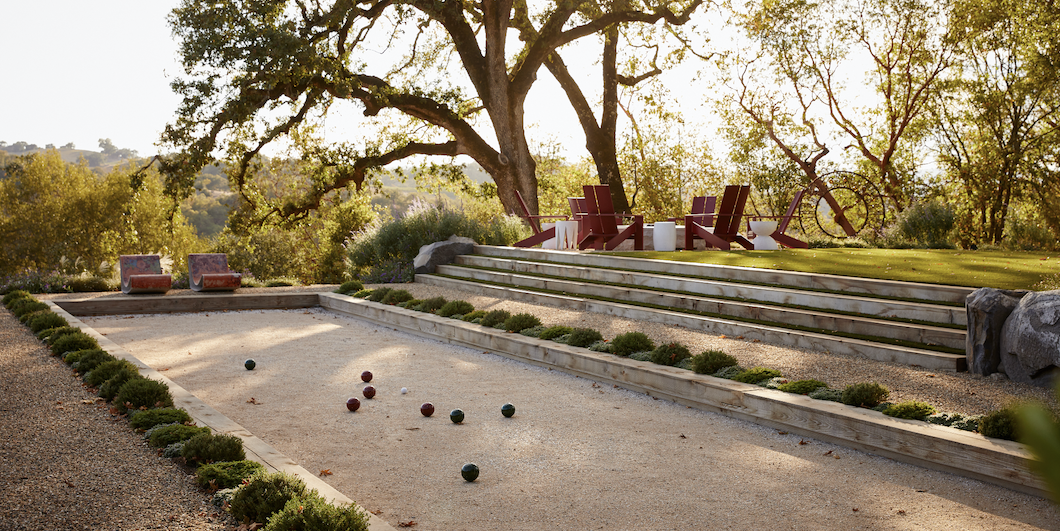What to Know About Building a Bocce Ball Court in Your Backyard

Bocce ball is swiftly gaining popularity, and for good reason: The Italian lawn game is fun yet challenging and can be played at practically any age. As more people continue to play, homeowners have started investing in their own backyard bocce ball courts. And while you can get one professionally installed, it is possible to DIY.
What to Know Before You Start:
Before you dive in, you need to determine: court size, location, and type. Official bocce ball courts are 86.92 feet long and 13.12 feet wide, according to the United States Bocce Federation. But unofficial courts can be smaller. Scale the size down based on what you think will work best with your yard space.
For the location, it’s best to choose a spot that gets good drainage. You’ll also want to choose an area that won’t interrupt the rest of your outdoor space. Consider an area you don’t currently use much, or one you want to transform.
Next, determine what type of court you want based on your maintenance preferences and where you live. Most bocce courts have a wooden border, a rocky drainage layer, and a playing surface. “The most typical bocce ball court is a clay bocce ball court,” says Paul Gold, CEO of the Florida-based company Sports Surfaces. “This is the easiest to build and most cost effective.”
Tennis court clay installations are popular on the East Coast because of their low maintenance, good bocce ball compatibility, and quick drainage. For one that will last for years to come, Gold recommends making sure you have enough room to bring machinery onto your property, including laser grading equipment to ensure you have a level surface. To build a sturdy border, Gold also advises working with a carpenter or a friend who is knowledgeable about woodwork.
A more inexpensive DIY court type is sand, but this option requires some maintenance like raking, smoothing, and moist compacting before playing. Other types include oyster shell and synthetic courts for which Gold strongly recommends enlisting a contractor. “This is very intricate construction and most homeowners do not possess the skills to work and finish concrete, and the oyster shell comes in bulk bags that weigh 2,500 pounds each, and equipment is needed to install it,” he says.
Have questions about your next renovation project? We’ve got answers. Let’s do this together.
How to Build a Bocce Ball Court:
Courts need to be built on a level area and require three layers of material. They often have a drainage system and a perimeter. Boccemon—a family-owned, Washington-based company that sells bocce court material and accessories—offers easy-to-follow construction plans and steps on its website. They also offer a few tips:
Make sure you are building on a flat surface, and check levels periodically as you add materials.
Don't skip lining the court with weed cloth. It's essential to ensure your court doesn't become a weed garden.
Don't forget to seal the wood with deck sealant for longevity.
For detailed instructions on how to DIY a bocce ball court, check out tutorials by Popular Mechanics and Southwest Boulder & Stone, a California-based landscape rock and supply superstore. With a little sweat, some solid planning, and a good chunk of time, you'll be able to enjoy endless bocce ball matches from the privacy of your own backyard.
Follow House Beautiful on Instagram.
You Might Also Like

